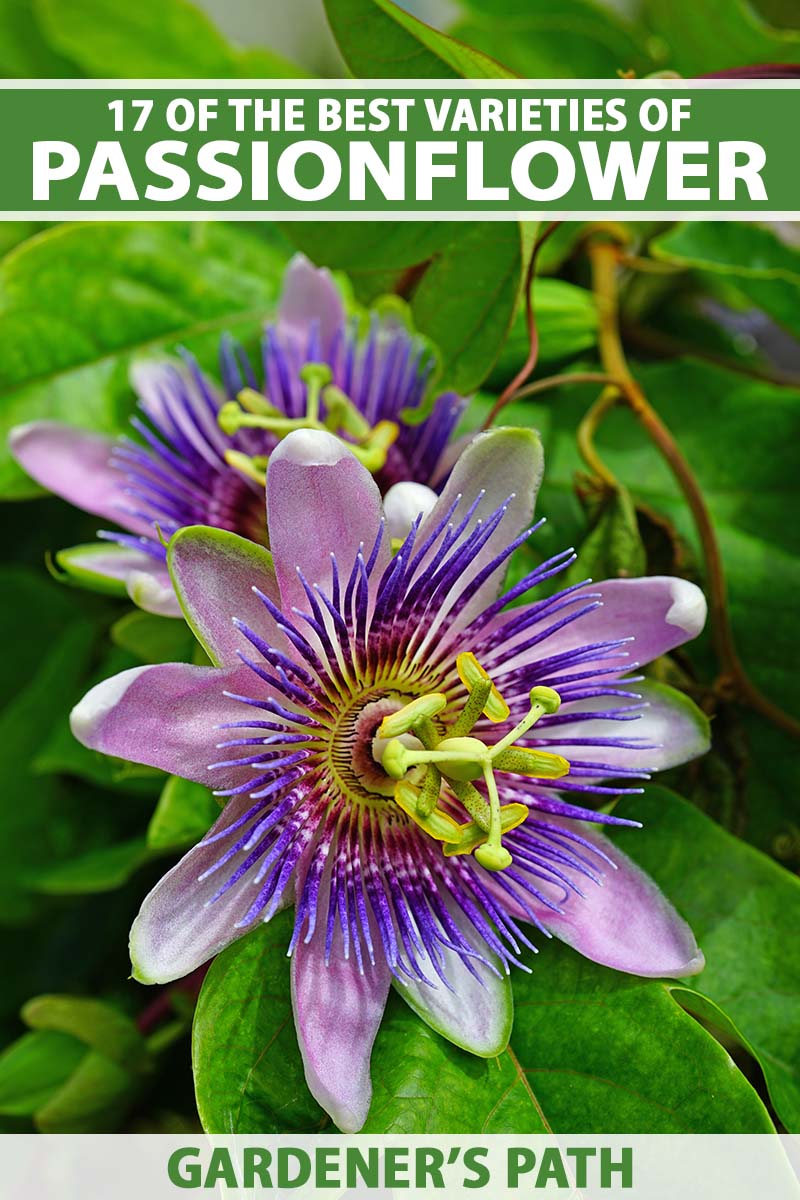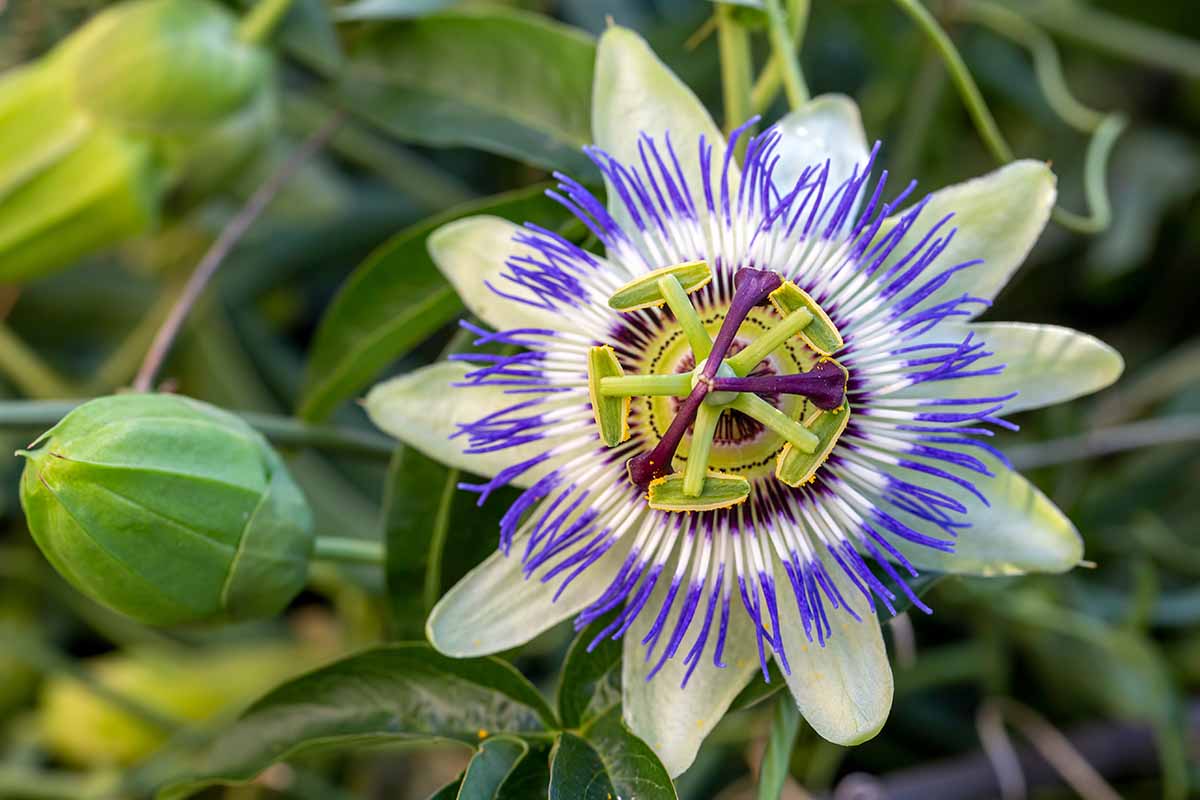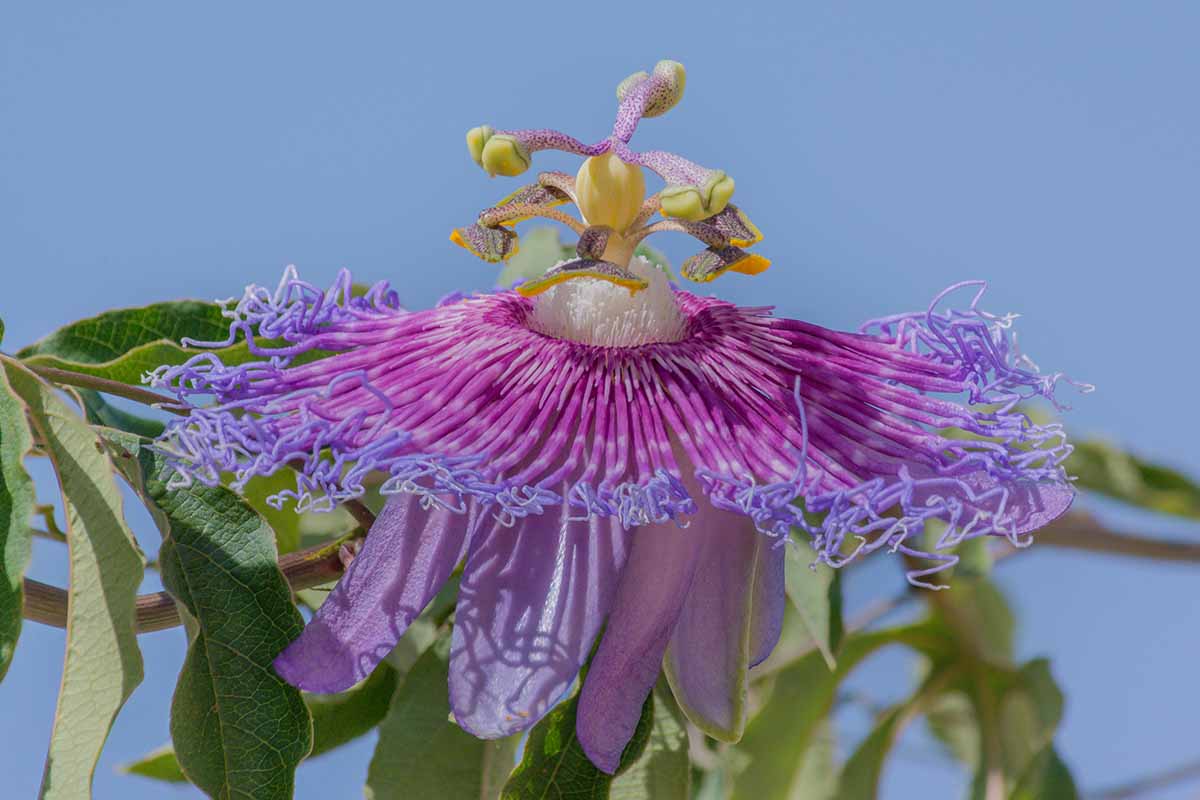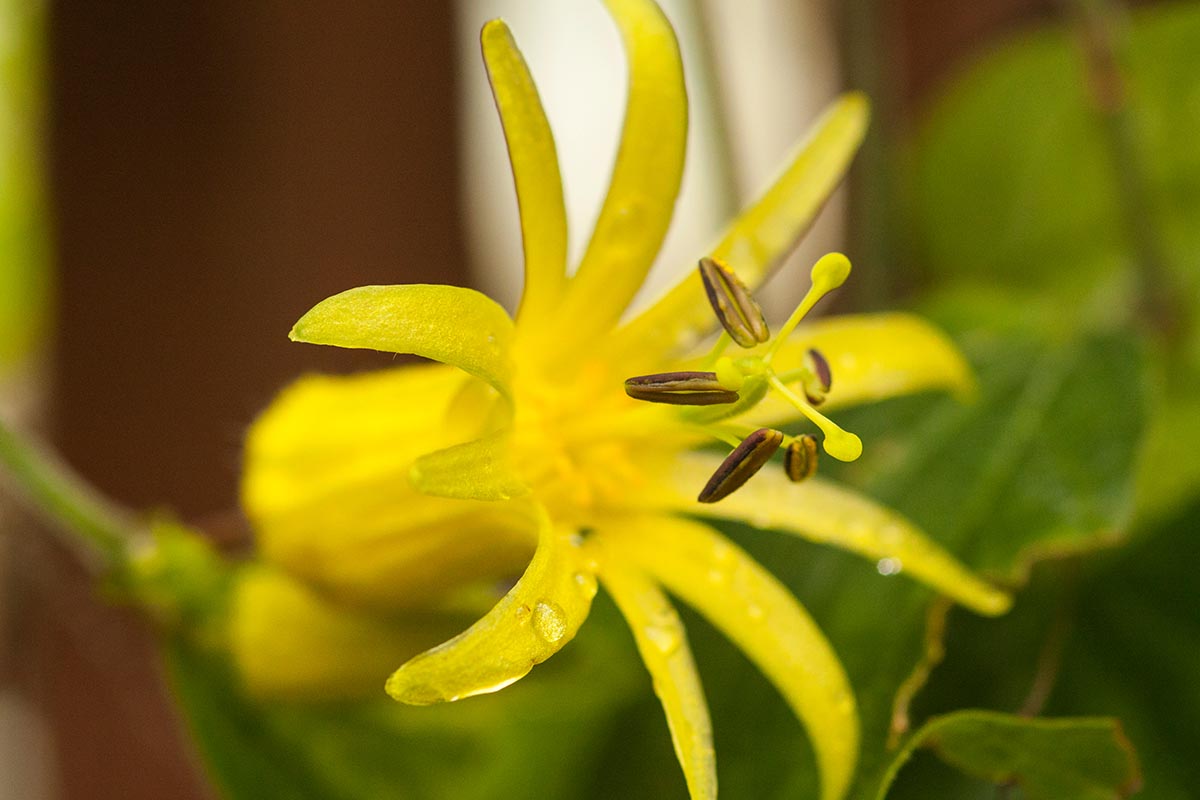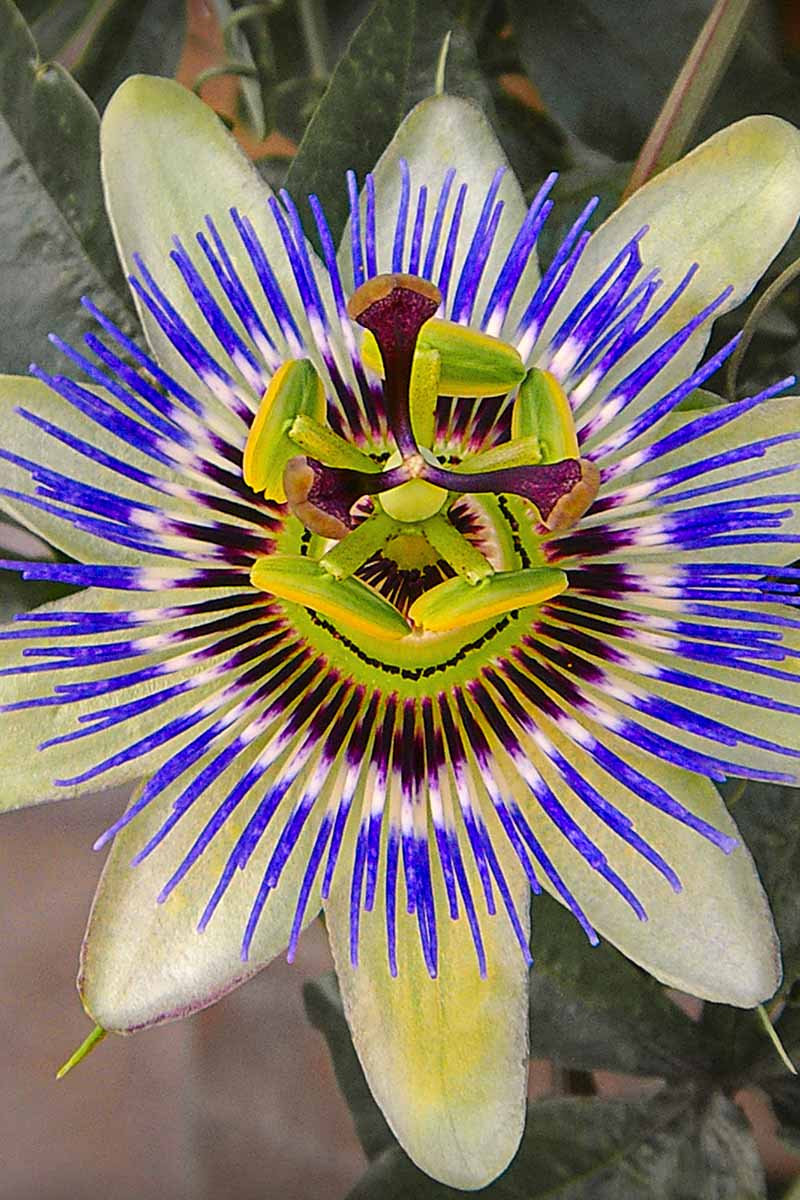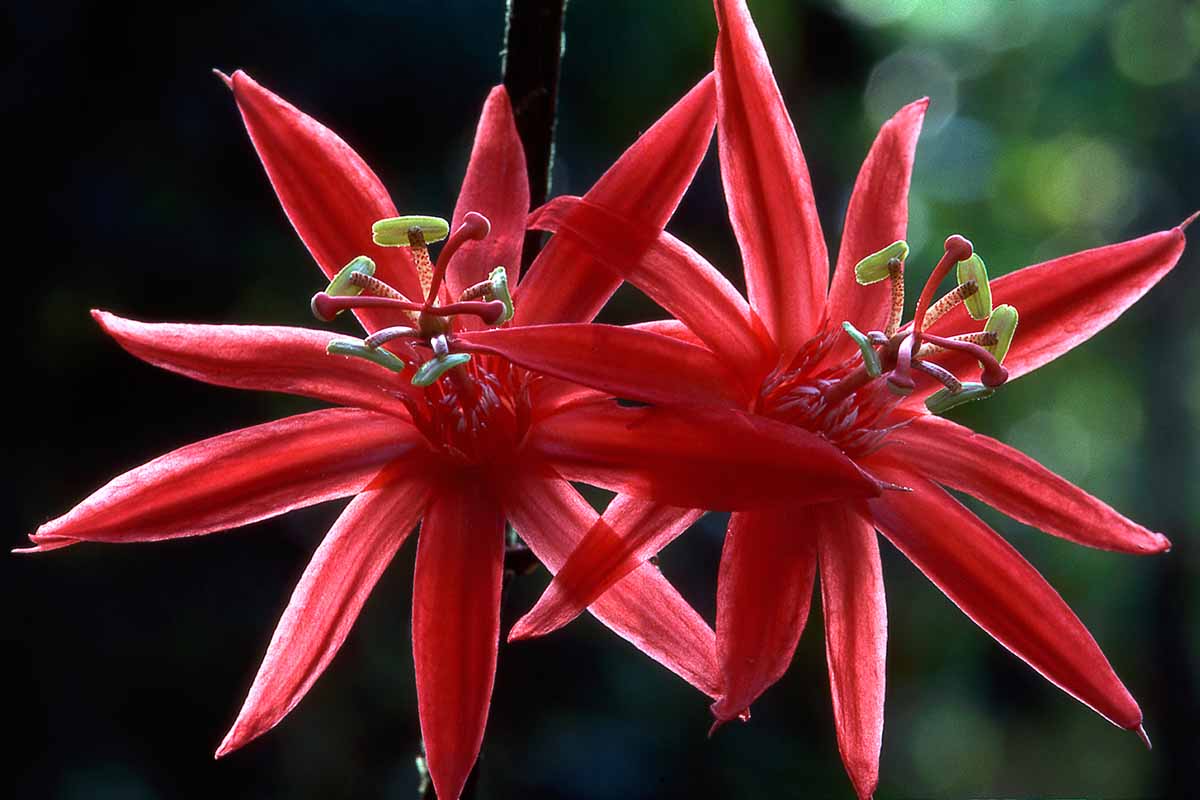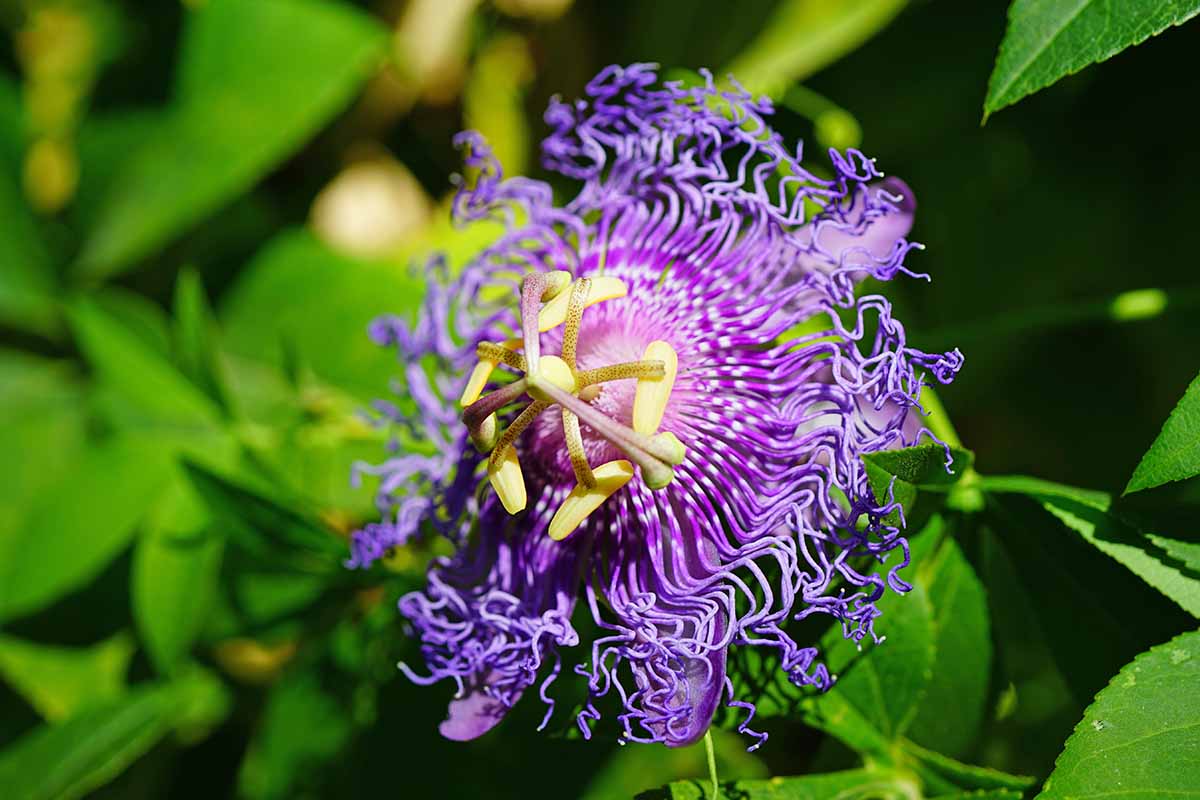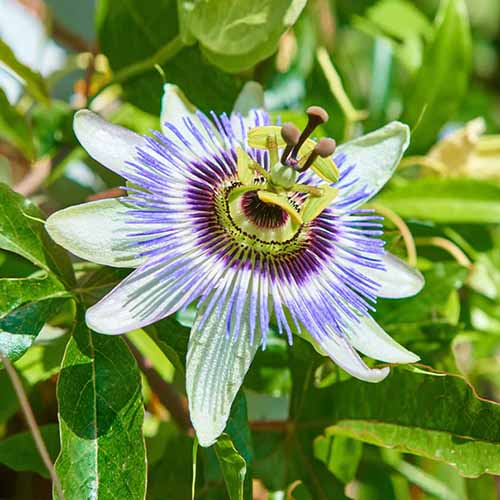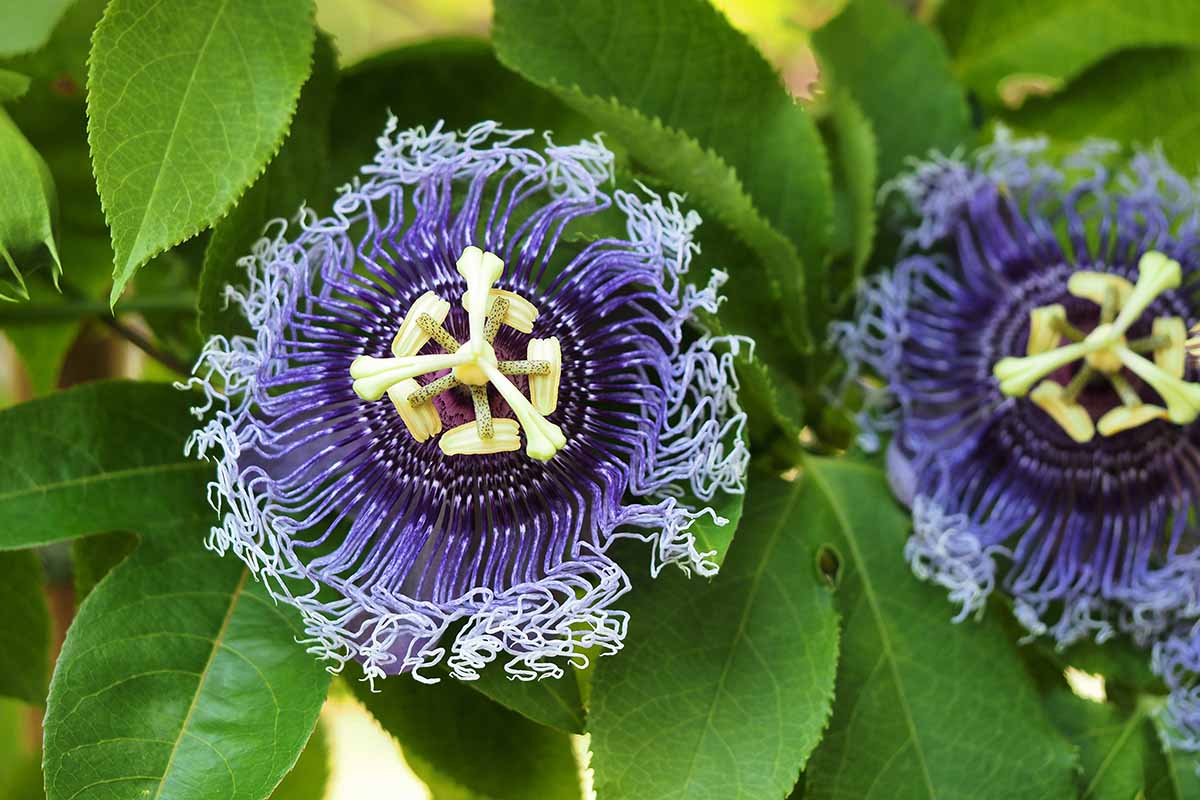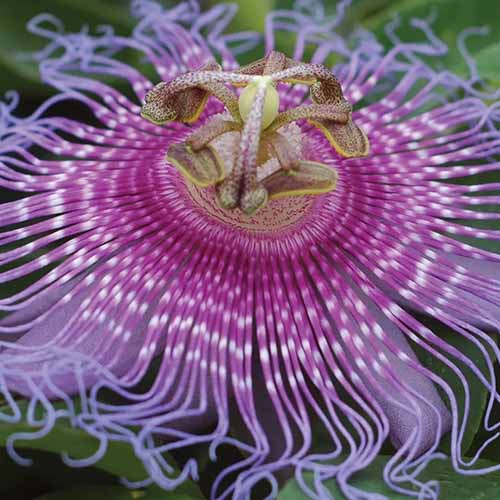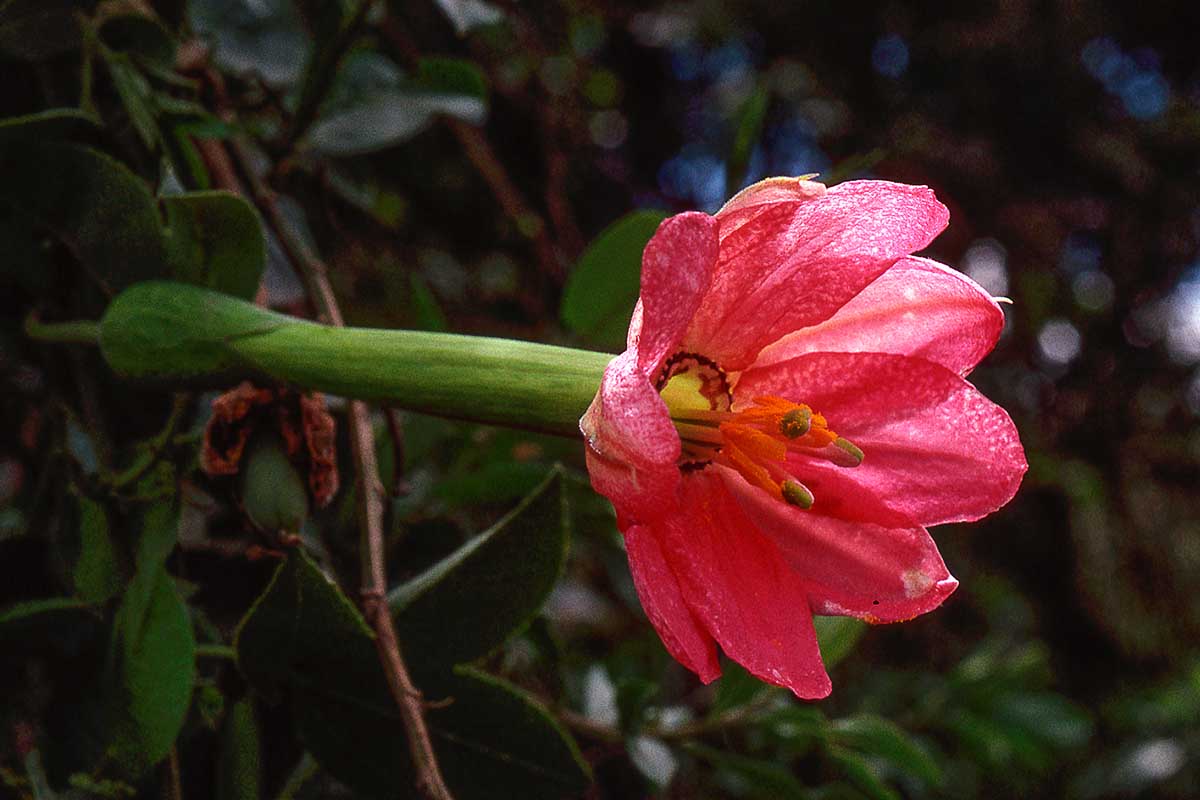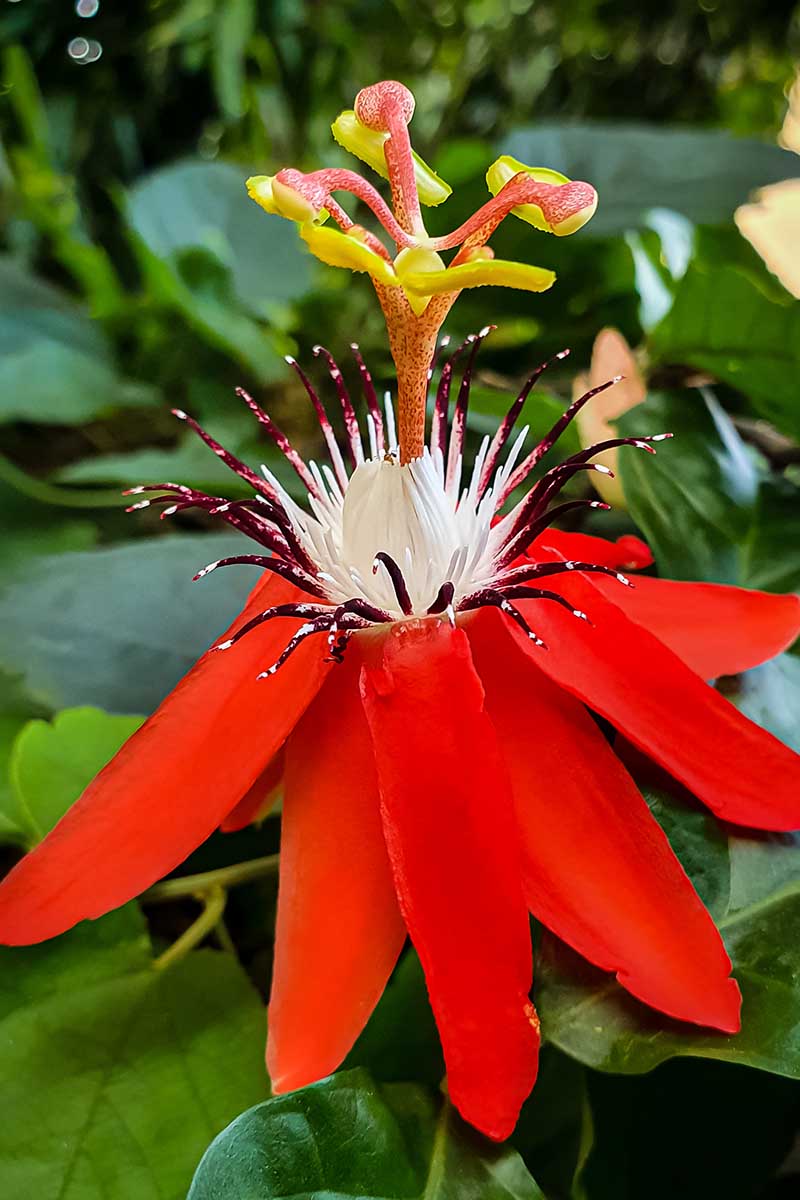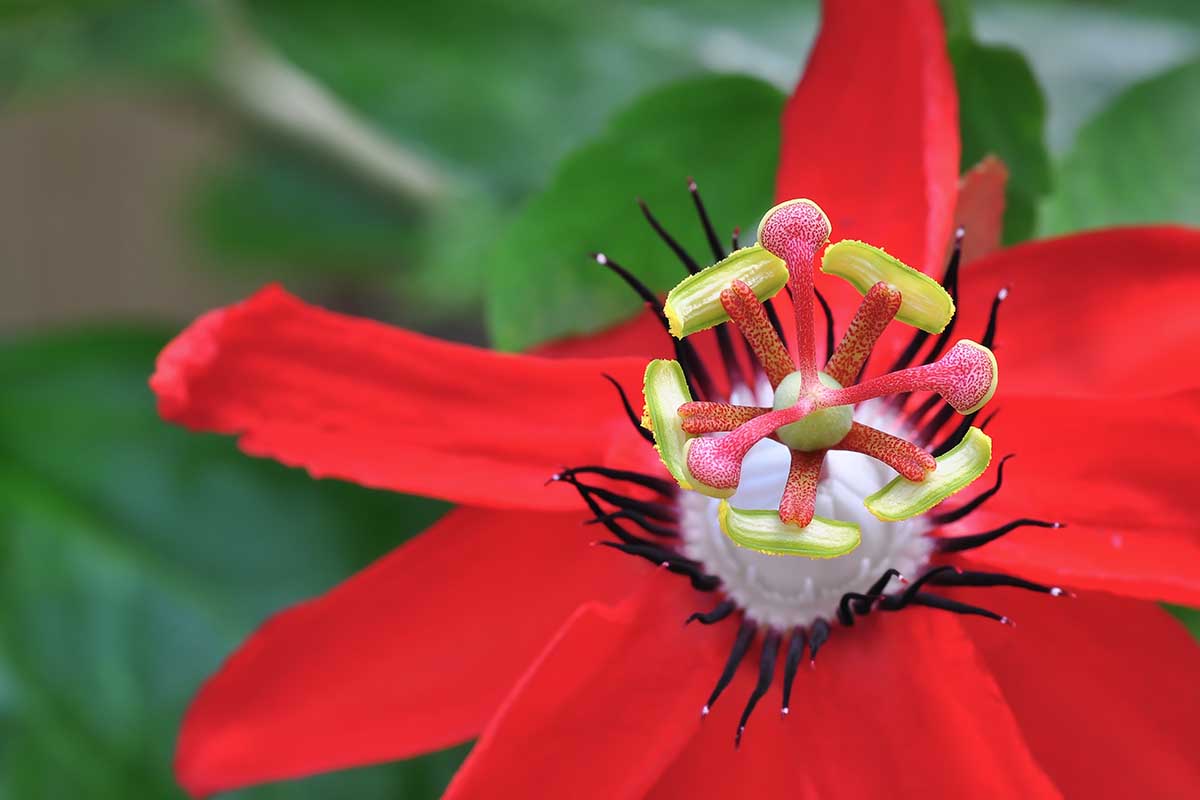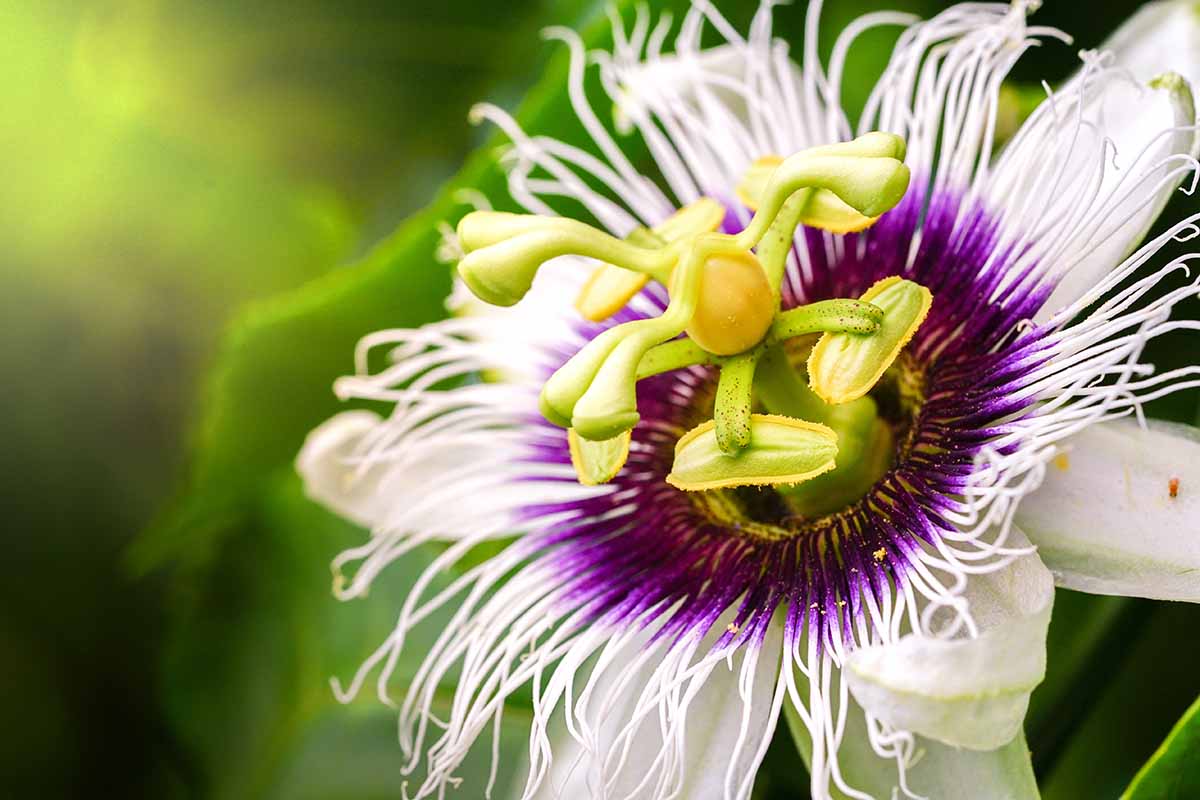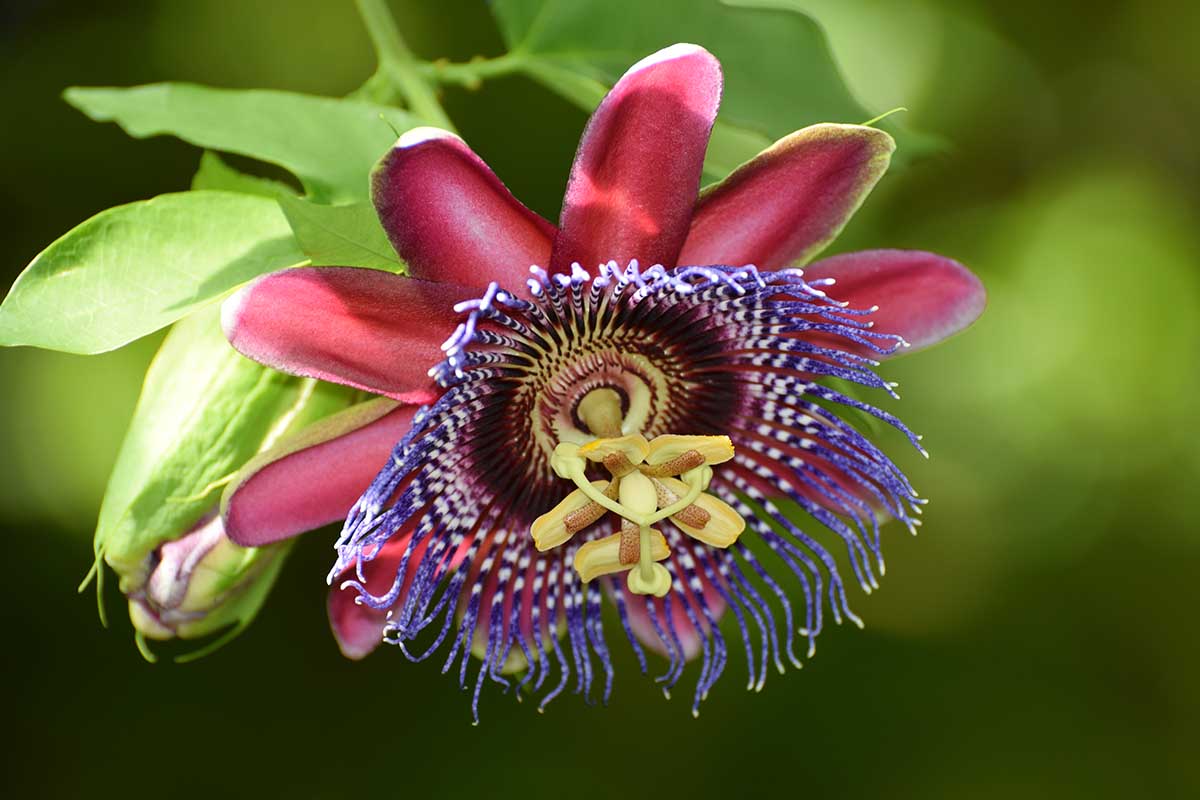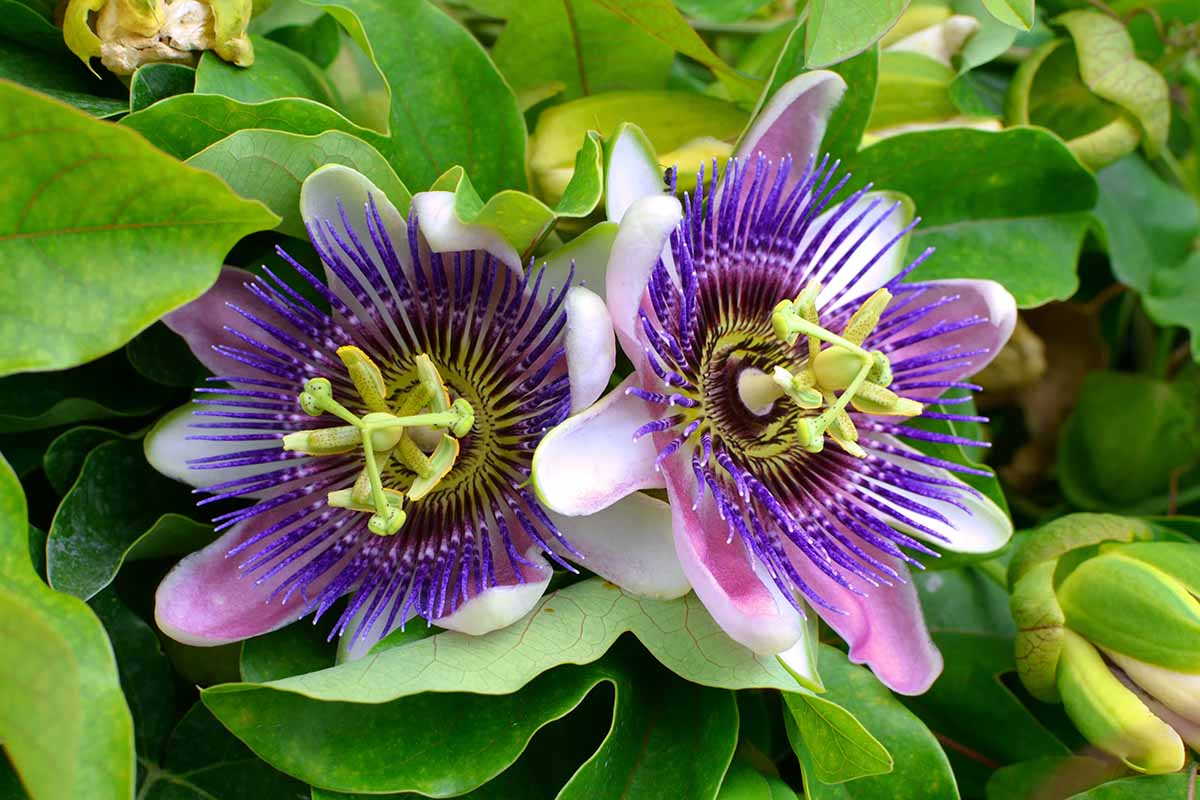In Europe, growers love the similar-looking bluecrown passionflower, and it’s the most popular variety there. But few gardeners are closely acquainted with the red banana passionfruit, with its long fuchsia-red petals and insignificant corona. Or what about Jamaican honeysuckle, featuring relatively petite petals and massive purple and white striped filaments that droop to embrace the stigma and anthers? We link to vendors to help you find relevant products. If you buy from one of our links, we may earn a commission. The ripe fruit of most cultivated species is technically edible but most of them have a bitter, unpalatable flavor. Unripe fruits and foliage contain toxic cyanic glycosides and should not be consumed. Unless otherwise noted, species and cultivars listed below should be grown for their ornamental value, not for eating. If you’re interested in learning about some of the most common and worthwhile species and hybrids to grow at home, keep reading. Here’s what we’ll cover, coming right up: A lot of people think they can’t grow passionflowers in their area because the temperatures are too cold in the winter, but there are a few plants that can handle cold temperatures all the way down to 0°F. Whether you need something cold-hardy or a vine to wow the neighbors – or both! – this guide can help you find it, so let’s climb right in.
3. Cincinnata
P. cincinnata is a Brazil native that has deep purple flowers with just a hint of red. The corollas are longer than the petals and have wavy edges. It has been crossed with other varieties to create many beloved hybrids. The flower petals are cream-colored with blue, white, and burgundy filaments. Some of the notable hybrids and cultivars to come out of this species include ‘Constance Eliott,’ ‘Pretty Tina,’ ‘Snow Queen,’ ‘Susanne,’ and ‘Diva.’ Blue Passionflower You can pick up packets of P. caerulea seeds at Eden Brothers.
2. Blue Bouquet
Hybrid ‘Blue Bouquet’ is exceptionally popular because it features purple, almost blue flowers with white and magenta rings at the center. It’s a heavy bloomer, and the 30-foot vines will be absolutely smothered in three-inch blossoms during the summer. One of its parents is P. caerulea, and it retains a similar size and coloring. It’s not the best option, however, if you’re hoping to eat the fruits. They’re not very flavorful. Rarely seen in cultivation, this species has been crossed with others to create several outstanding hybrids, including ‘Frizzle King,’ ‘Incense,’ ‘Liliana,’ and ‘Catherine Howard.’
4. Citrina
P. citrina was described in 1991 by American botanist John M. MacDougal. He found this passionflower species growing wild in Honduras. This little guy has petite yellow flowers and is usually grown as a houseplant, as it can flower for up to 10 months of the year. Hybrid cultivars of this species include ‘Becky Speed,’ ‘Golden Jubilee,’ and ‘Polly Molly.’
5. Damsel’s Delight
Passionflower breeder extraordinaire Myles Irvine created this hybrid, though he hasn’t revealed its parentage. It was originally called ‘Silly Cow’ as a term of endearment for his dear friend, but he has since renamed it ‘Damsel’s Delight.’ The five-inch-wide flowers have white petals and wavy purple filaments that are tinged with dark purple at the center. Whatever you call this cultivar, it’s a beauty. Don’t select this hybrid if you’re aiming to grow fruits, though. It’s sterile and doesn’t set fruit.
6. Elizabeth
Beautiful ‘Elizabeth’ was created by breeder Patrick Worley who hybridized P. phoenicea ‘Ruby Glow’ and P. incarnata. It has flat, purple petals with violet and magenta coronas that twist and curl around each other. It’s a robust plant that is covered profusely in four-inch flowers all summer long. ‘Elizabeth’ also has some of the best-tasting fruits, which are large and sweet.
7. Gritensis
P. gritensis isn’t a common species at nurseries, but hybrids of this Colombian native are some of the prettiest options out there. The flowers have huge fuchsia petals with a faint white stripe along the midvein. The petals fold back, putting the salmon-colored corona front and center. Some of the more notable hybrids include ‘Anastasia,’ with salmon and white filaments, and ‘Grand Duchess,’ with extraordinary pink petals.
8. Incense
P. incarnata and P. cincinnata were crossbred to create ‘Incense,’ a stunning purple hybrid. The corona and petals are deep purple, with long, wavy filaments. This is one of the hardiest passionflowers, and it can survive temperatures down to 0°F. It also has beautiful dark green leaves and tasty, sweet fruits. This hybrid can do it all. No wonder it nabbed the Royal Horticultural Society’s Award of Merit in 1976! If the vine is killed by cold weather, it will regenerate from the roots so long as temperatures don’t drop too much below 0°F. To grow a good crop of fruits, plant it with a purple passionflower to cross-pollinate.
14. Red
The Brazilian native red passionflower, P. racemosa, varies slightly from some of its family in that the petals are the star of the show rather than the filaments. Just like its scarlet parent, she has long, raspberry-red petals. The corona has a bright white center with long, wavy filaments in purple with stripes of magenta and white. ‘Lady Margaret’
10. Passionfruit
Purple granadilla (P. edulis) has a beautiful flower with frilly curled purple and white filaments over snowy white petals, and it would be worth growing this species for the blossoms alone. But the flower produces a comparatively massive berry, making it one of the best options for growing edible fruit. It’s the only species known simply as “passionfruit.” Passionfruit If you want to grow your own edible passionfruit, you can find plants in one- or three-gallon containers available from Fast Growing Trees.
11. Perfumed
Perfumed passionflower (P. vitifolia) is named for its heavily fragrant fruit, but there’s a catch. When the berry falls off the plant, it’s extremely sour. But left to ripen for several weeks, it becomes sweeter, like a tart strawberry. The flower itself is vibrant red with long, lanceolate petals, and short red and white filaments that don’t open against the petals but remain upright. It has pale purple petals and filaments with a small white ring. The filaments are crimped at the ends, giving it a strange, alien-like appearance. ‘Alba’ is a pure-white hybrid that you might like to add to your garden. Many times, you’ll simply see the plant sold under the species name or under the name “maypops.” Maypops, Purple Passionflower You can find live plants available at Burpee.
13. Red Banana
Also called vanilla passionfruit, P. antioquiensis has some of the largest flowers in the genus, up to six inches across! They have bright fuchsia-red petals with petite purple corollas. The fruits are long, green, and almost banana-shaped. The long, salmon-red petals frame thick, short, cream-colored filaments and a prominent green anther. Don’t confuse this species with P. manicata, which is also called red passionflower. In addition to sharing a common name, they look similar.
15. Scarlet
Scarlet passionflower (P. coccinea) has long, velvety, vivid red petals and white and blood-red filaments. The flowers can be up to four inches across. This is one species that doesn’t mind partial sun. You’ll still have a vibrant show of blooms, even without full sun exposure. Notable hybrids include ‘Cordelia,’ ‘Hot Shot,’ ‘Sherry,’ and ‘Wil.’
16. Stinking
The stinking passionflower (P. foetida) only stinks if you disturb the flowers, so don’t worry about turning your yard into a fetid spot that no one wants to hang out in. The bad news is that this plant has become invasive in tropical regions across the planet. Still, if you can keep it under control (try container planting!), it’s a worthwhile species to have around. It has beautifully rounded, white petals and white filaments with a ring of maroon at the center. ‘Alba’ and ‘Aurora’ are two standout hybrids.
17. Winged-Stem
Winged-stem passionflower (P. alata) is distinct from its cousins in that it has bright red petals and purple and white corona filaments, but the filaments don’t open fully. Instead, they stay somewhat closed around the anthers. It’s exceptionally fragrant and the fruits are regarded as some of the best tasting of the whole genus. ‘Frederic,’ ‘Nicole,’ ‘Starlight,’ and ‘Superba’ all come out of this species. Whether you’re looking for unusual fruits, massive flowers, or a vine that will stick around even when the weather is freezing, one on this list is going to fill the bill. Let us know in the comments below which you end up growing! If you want to learn more about the beautiful, bold passionflower, check out some of our other guides next, starting with these:
How to Grow and Care for PassionflowerFertilize Your Passionflower Vines to Boost Growth and Production7 Common Reasons Why Passionflower Fails to Bloom
